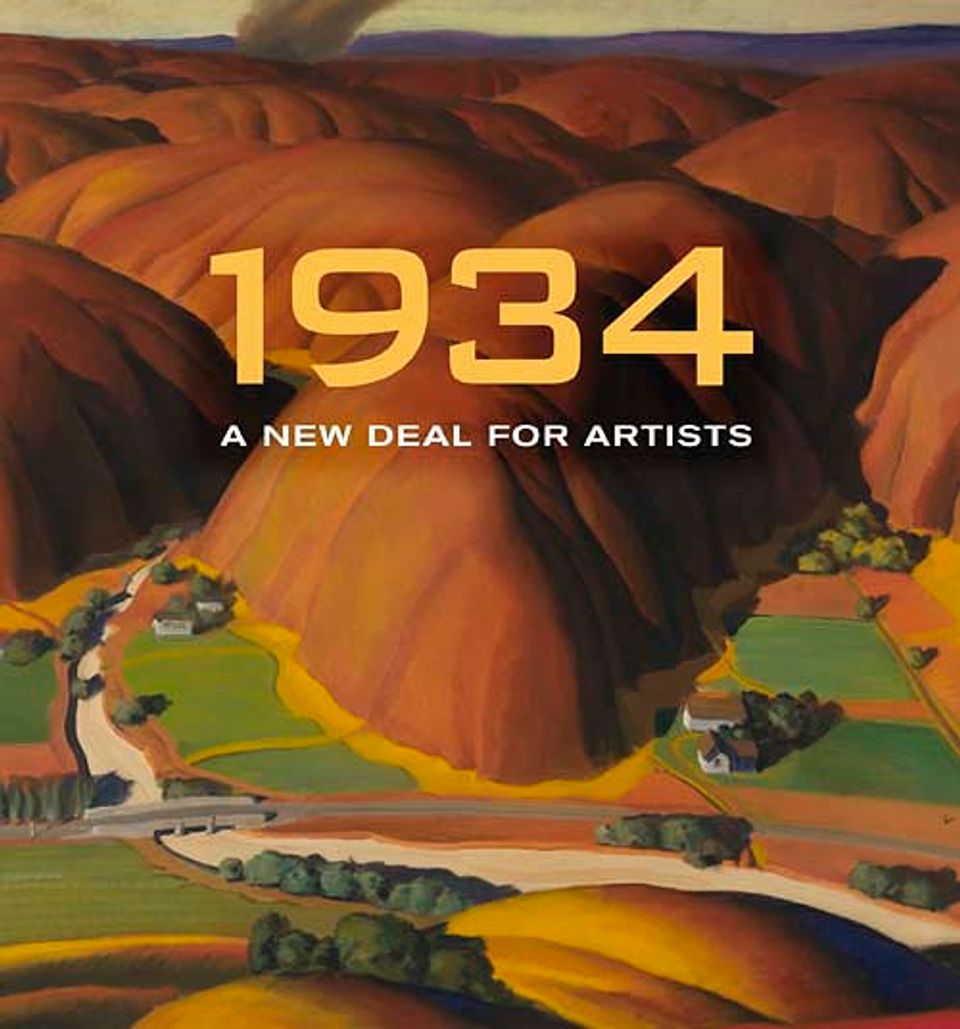Artwork Details
- Title
- Northern Minnesota Mine
- Artist
- Date
- 1934
- Location
- Not on view
- Dimensions
- 40 x 50 1⁄8 in. (101.6 x 127.2 cm.)
- Credit Line
- Transfer from the U.S. Department of Labor
- Mediums
- Mediums Description
- oil on canvas
- Classifications
- Subjects
- Figure group
- New Deal — Public Works of Art Project — Minnesota
- Occupation — industry — mining
- Architecture — industry — mine
- Landscape — Minnesota
- Object Number
- 1964.1.49
- Research Notes
Artwork Description
Albinson, a native of Minnesota, knew the iron mines of northern Minnesota's Mesabi Range well; in 1932 one of the big mining companies had hired him to paint local scenes, including the Spruce and Mesabi Mountain mines. In his PWAP painting, Albinson took evident delight in the characteristic rusty orange of the iron-laden soil, playing it against a pale blue sky, green bushes, and a vivid turquoise shed.
1934: A New Deal for Artists exhibition label
Dewey Albinson created this painting for the Public Works of Art Project in 1934. He loved the "life, color and drama" of Minnesota and painted many images of small towns and industrial sites (Swanson, "A Study of Dewey Albinson," n.d., unpublished ms., American Art curatorial file). The rich, warm tones of pinks, oranges, and reds evoke the iron-tinted landscape around the mine, and emphasize the sweeping curves of the excavation in the background. The workers, colorful buildings, and smoking trains create an image of productivity and hope for midwesterners battered by the Depression.















